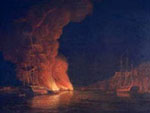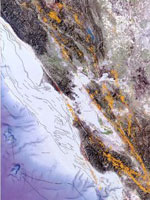Presidential Valentines
Match each of the selections below with the president (in the pull-down menu) who received or sent it.
1.  John Adams, from Abigail Adams (pictured). Abigail Adams wrote this to her husband in a December 23, 1782 letter. The original letter can be read here, at the website of the Massachusetts Historical Society.
John Adams, from Abigail Adams (pictured). Abigail Adams wrote this to her husband in a December 23, 1782 letter. The original letter can be read here, at the website of the Massachusetts Historical Society.
2.  Woodrow Wilson, to Edith Bolling Galt (pictured). This is from a letter that widower President Wilson wrote from the White House on September 19, 1915, to Edith Bolling Galt, whom he would marry. The full text of the letter is in volume 34 of The Papers of Woodrow Wilson, ed. Arthur Stanley Link (Princeton, NJ: Princeton University Press, 1994), page 491.
Woodrow Wilson, to Edith Bolling Galt (pictured). This is from a letter that widower President Wilson wrote from the White House on September 19, 1915, to Edith Bolling Galt, whom he would marry. The full text of the letter is in volume 34 of The Papers of Woodrow Wilson, ed. Arthur Stanley Link (Princeton, NJ: Princeton University Press, 1994), page 491.
3.  Ronald Reagan, to Nancy Reagan (pictured). This is from a letter written on White House stationery by Ronald Reagan, to his wife Nancy on March 4, 1981. From Nancy Reagan, I Love You, Ronnie: The Letters of Ronald Reagan to Nancy Reagan (New York: Random House, 2002).
Ronald Reagan, to Nancy Reagan (pictured). This is from a letter written on White House stationery by Ronald Reagan, to his wife Nancy on March 4, 1981. From Nancy Reagan, I Love You, Ronnie: The Letters of Ronald Reagan to Nancy Reagan (New York: Random House, 2002).
4.  Theodore Roosevelt, about Alice Lee (pictured). This is from Roosevelt's diary entry of February 13, 1880. On that evening, he became engaged to Alice Lee, whom he married. On Valentine's Day, 1884, she died while giving birth to their daughter Alice. Roosevelt's mother died the same day. His diary entry for that day is simply a large black X with the words, "The light has gone out of my life." The Library of Congress has made scans of the original diary pages, available online here.
Theodore Roosevelt, about Alice Lee (pictured). This is from Roosevelt's diary entry of February 13, 1880. On that evening, he became engaged to Alice Lee, whom he married. On Valentine's Day, 1884, she died while giving birth to their daughter Alice. Roosevelt's mother died the same day. His diary entry for that day is simply a large black X with the words, "The light has gone out of my life." The Library of Congress has made scans of the original diary pages, available online here.
The relationship between John and Abigail Adams remains famous in U.S. history, largely due to the many letters they exchanged on issues both personal and political. In this Massachusetts Historical Society presentation, you can listen to politicians read aloud some of this correspondence; the full text of much of 1,198 of their letters can be read at the Adams Family Papers website.
For more on the First Ladies and their relationships to their husbands (and their accomplishments on their own), try a search in the upper right-hand corner of the website using the keywords "First Ladies." You'll find resources including a quiz on First Ladies' firsts while in office, Hillary Clinton's thoughts on the role of First Lady, a Library of Congress website featuring portraits of presidents and their wives, Ohio's National First Ladies' Library website, a Colonial Williamsburg re-enactor presenting Martha Washington's memories of the American Revolution, a National Portrait Gallery talk on the relationship between Mary and Abraham Lincoln, and more.
- Library of Congress Prints and Photographs Division, "Mrs. Theodore Roosevelt, three-quarter length portrait, standing, facing slightly left," 1880-1884 (accessed January 8, 2010).
- Library of Congress Prints and Photographs Division, "Mrs. Woodrow Wilson (Edith Bolling Galt), bust portrait, facing front," 1915-1921 (accessed January 8, 2010).
- Massachusetts Historical Society, Adams Family Papers: An Electronic Archive (accessed January 8, 2010).
- Ronald Reagan Presidential Library Archives, Nancy Reagan at Rancho Del Cielo, 1983 (accessed January 8, 2010).





 visible each November, blazed with extraordinary strength. The falling stars caught the attention of people throughout North America, and many Lakota bands chose the shower as the event to stand for the year. Later in the 1800s, ethnologist Garrick Mallery (1831-1894) identified the pictures as standing for the meteor shower, allowing scholars to match the years of the winter counts with the European calendar.
visible each November, blazed with extraordinary strength. The falling stars caught the attention of people throughout North America, and many Lakota bands chose the shower as the event to stand for the year. Later in the 1800s, ethnologist Garrick Mallery (1831-1894) identified the pictures as standing for the meteor shower, allowing scholars to match the years of the winter counts with the European calendar. introduced peg calendars to the Native peoples of Alaska so that they could track the holy days of the Russian Orthodox Church. Russian contact with Alaskan cultures began in the 1700s, and settlement of the region, accompanied by cultural exchange, continued until 1867, when the U.S. purchased Alaska from the Russians. Peg calendars remained in use into the 20th century.
introduced peg calendars to the Native peoples of Alaska so that they could track the holy days of the Russian Orthodox Church. Russian contact with Alaskan cultures began in the 1700s, and settlement of the region, accompanied by cultural exchange, continued until 1867, when the U.S. purchased Alaska from the Russians. Peg calendars remained in use into the 20th century. to record the passing of time in this manner. However, the use of calendar sticks was not limited to the Winnebago. Other Native American groups throughout North America used sticks, including the Pima, the Osage, and the Zuni. The markings on sticks and their daily and ceremonial use varied from region to region and people to people.
to record the passing of time in this manner. However, the use of calendar sticks was not limited to the Winnebago. Other Native American groups throughout North America used sticks, including the Pima, the Osage, and the Zuni. The markings on sticks and their daily and ceremonial use varied from region to region and people to people. one beginning around the summer solstice (June 20th or 21st) and the other with the winter solstice (December 21st or 22nd). After the winter solstice, katsinam, benevolent spirits, visit the Hopi people, personated by Hopi men in masks and costumes. Following the summer solstice, the katsinam leave the Hopi again.
one beginning around the summer solstice (June 20th or 21st) and the other with the winter solstice (December 21st or 22nd). After the winter solstice, katsinam, benevolent spirits, visit the Hopi people, personated by Hopi men in masks and costumes. Following the summer solstice, the katsinam leave the Hopi again. The Smithsonian National Museum of Natural History's online exhibit
The Smithsonian National Museum of Natural History's online exhibit 
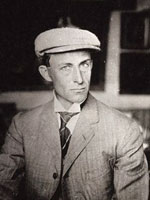
 In 1790, federal marshals collected data for the first census, knocking by hand on each and every door. As directed by the U.S. Constitution, they counted the population based on specific criteria, including "males under 16 years, free White females, all other free persons (by sex and color), and slaves." There was no pre-printed form, however, so marshals submitted their returns, sometimes with additional information, in a variety of formats.
In 1790, federal marshals collected data for the first census, knocking by hand on each and every door. As directed by the U.S. Constitution, they counted the population based on specific criteria, including "males under 16 years, free White females, all other free persons (by sex and color), and slaves." There was no pre-printed form, however, so marshals submitted their returns, sometimes with additional information, in a variety of formats.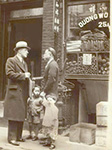
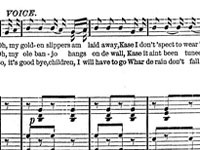
 In 1928, Alfred Emmanuel Smith, Jr., four times governor of New York, ran as the Democratic candidate for president of the U.S.. Though "Al" Smith's heritage also included German, Italian, and English ancestry, he identified as Irish American, and faced prejudice for both his ethnicity and his religion (he was Catholic) during his campaign. The press and the public suspected him of drunkenness (stereotypically associated with Irish Americans), manipulation by the Pope, and involvement with Tammany Hall (a New York City Democratic political machine known for supporting Irish Americans in politics).
In 1928, Alfred Emmanuel Smith, Jr., four times governor of New York, ran as the Democratic candidate for president of the U.S.. Though "Al" Smith's heritage also included German, Italian, and English ancestry, he identified as Irish American, and faced prejudice for both his ethnicity and his religion (he was Catholic) during his campaign. The press and the public suspected him of drunkenness (stereotypically associated with Irish Americans), manipulation by the Pope, and involvement with Tammany Hall (a New York City Democratic political machine known for supporting Irish Americans in politics). Irish-born John Barry first crisscrossed the Atlantic as a respected commander of merchant ships—but when war broke out with England, he joined the Continental Army and was commissioned a naval captain in 1776. (He also served in several battles on land, while a ship he was to command, the Effington, was under construction.) Though he gained fame for valor and loyalty during the war, he returned to captaining merchant ships when it concluded.
Irish-born John Barry first crisscrossed the Atlantic as a respected commander of merchant ships—but when war broke out with England, he joined the Continental Army and was commissioned a naval captain in 1776. (He also served in several battles on land, while a ship he was to command, the Effington, was under construction.) Though he gained fame for valor and loyalty during the war, he returned to captaining merchant ships when it concluded. The daughter of Irish immigrants, Margaret Brown rose into high-society circles when her husband, James Joseph Brown, became a board member of the Ibex Mining Company. She used her new social status to advocate for the rights of women and children—activities which she continued throughout her life. Her status also allowed her to board the Titanic as a first-class passenger; she earned fame and the nickname "The Unsinkable Molly Brown" for her efforts to get passengers into lifeboats and to bring her own lifeboat around to look for survivors.
The daughter of Irish immigrants, Margaret Brown rose into high-society circles when her husband, James Joseph Brown, became a board member of the Ibex Mining Company. She used her new social status to advocate for the rights of women and children—activities which she continued throughout her life. Her status also allowed her to board the Titanic as a first-class passenger; she earned fame and the nickname "The Unsinkable Molly Brown" for her efforts to get passengers into lifeboats and to bring her own lifeboat around to look for survivors. Mary Harris Jones, also known as "Mother Jones," participated in the founding of the Industrial Workers of the World (IWW) in 1905. Jones, who was born in Ireland and grew up in the U.S., took a leading role in the early-20th-century labor movement following the death of her husband and four children in a yellow fever epidemic and the later loss of her dressmaking shop in the Great Chicago Fire. Arrested multiple times, she gained notoriety across the country as a labor organizer, motivating women and children to participate in strikes in support of their husbands and fathers. She also organized children to strike for their own rights—in 1903, child mill and mine workers marched in Jones's "Children's Crusade," helping to bring child labor to public attention.
Mary Harris Jones, also known as "Mother Jones," participated in the founding of the Industrial Workers of the World (IWW) in 1905. Jones, who was born in Ireland and grew up in the U.S., took a leading role in the early-20th-century labor movement following the death of her husband and four children in a yellow fever epidemic and the later loss of her dressmaking shop in the Great Chicago Fire. Arrested multiple times, she gained notoriety across the country as a labor organizer, motivating women and children to participate in strikes in support of their husbands and fathers. She also organized children to strike for their own rights—in 1903, child mill and mine workers marched in Jones's "Children's Crusade," helping to bring child labor to public attention.
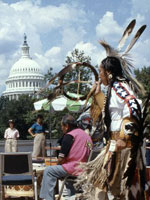
 On June 15, 1904, the General Slocum departed on the annual Sunday School excursion of St. Mark's German Lutheran Church. However, unbeknownst to passengers and crew, a fire had broken out in a storage room. Many passengers died of burns, and others drowned, unable to swim. The steamer's defective life preservers added to the death toll. The preservers' insides, made of finely-ground cork, quickly became waterlogged when the preservers' rotten covers fell away. One survivor told of a woman with three children. The mother and two girls could swim, but one daughter could not. The daughter was put in a life preserver and tossed overboard, where she immediately sank.
On June 15, 1904, the General Slocum departed on the annual Sunday School excursion of St. Mark's German Lutheran Church. However, unbeknownst to passengers and crew, a fire had broken out in a storage room. Many passengers died of burns, and others drowned, unable to swim. The steamer's defective life preservers added to the death toll. The preservers' insides, made of finely-ground cork, quickly became waterlogged when the preservers' rotten covers fell away. One survivor told of a woman with three children. The mother and two girls could swim, but one daughter could not. The daughter was put in a life preserver and tossed overboard, where she immediately sank. If you are curious about the Mary Celeste, one interesting online resource is "
If you are curious about the Mary Celeste, one interesting online resource is "